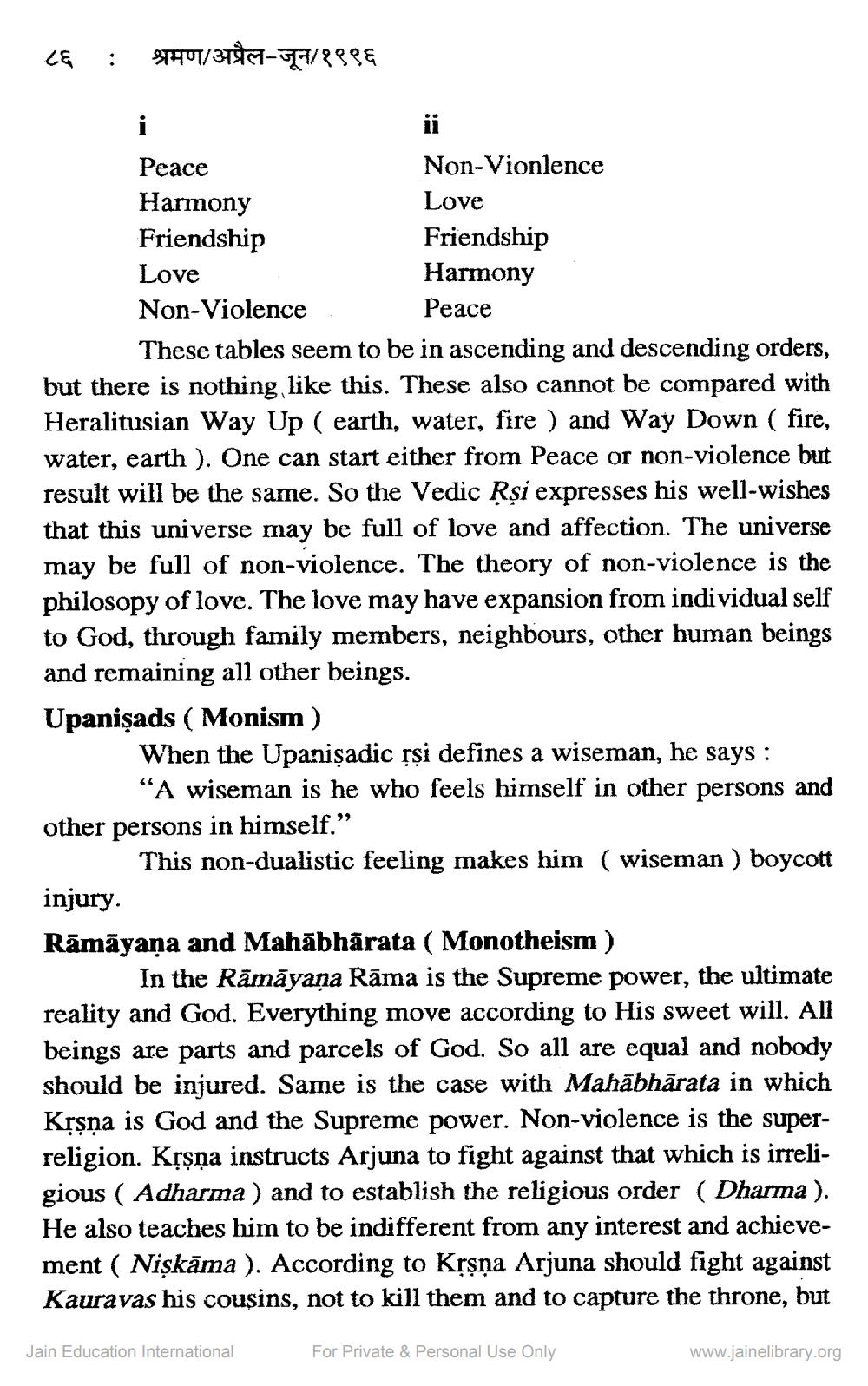________________
46 : THU/3d-s4 Ros
Peace
Non-Vionlence Harmony
Love Friendship
Friendship Love
Harmony Non-Violence. Peace
These tables seem to be in ascending and descending orders, but there is nothing like this. These also cannot be compared with Heralitusian Way Up ( earth, water, fire ) and Way Down ( fire, water, earth ). One can start either from Peace or non-violence but result will be the same. So the Vedic Rși expresses his well-wishes that this universe may be full of love and affection. The universe may be full of non-violence. The theory of non-violence is the philosopy of love. The love may have expansion from individual self to God, through family members, neighbours, other human beings and remaining all other beings. Upanişads ( Monism )
When the Upanişadic rşi defines a wiseman, he says :
“A wiseman is he who feels himself in other persons and other persons in himself.”
This non-dualistic feeling makes him ( wiseman ) boycott injury. Rāmāyana and Mahābhārata ( Monotheism )
In the Rāmāyana Rāma is the Supreme power, the ultimate reality and God. Everything move according to His sweet will. All beings are parts and parcels of God. So all are equal and nobody should be injured. Same is the case with Mahābhārata in which Krsna is God and the Supreme power. Non-violence is the superreligion. Krşņa instructs Arjuna to fight against that which is irreligious ( Adharma ) and to establish the religious order ( Dharma). He also teaches him to be indifferent from any interest and achievement ( Nişkāma ). According to Krşņa Arjuna should fight against Kauravas his cousins, not to kill them and to capture the throne, but
Jain Education International
For Private & Personal Use Only
www.jainelibrary.org




